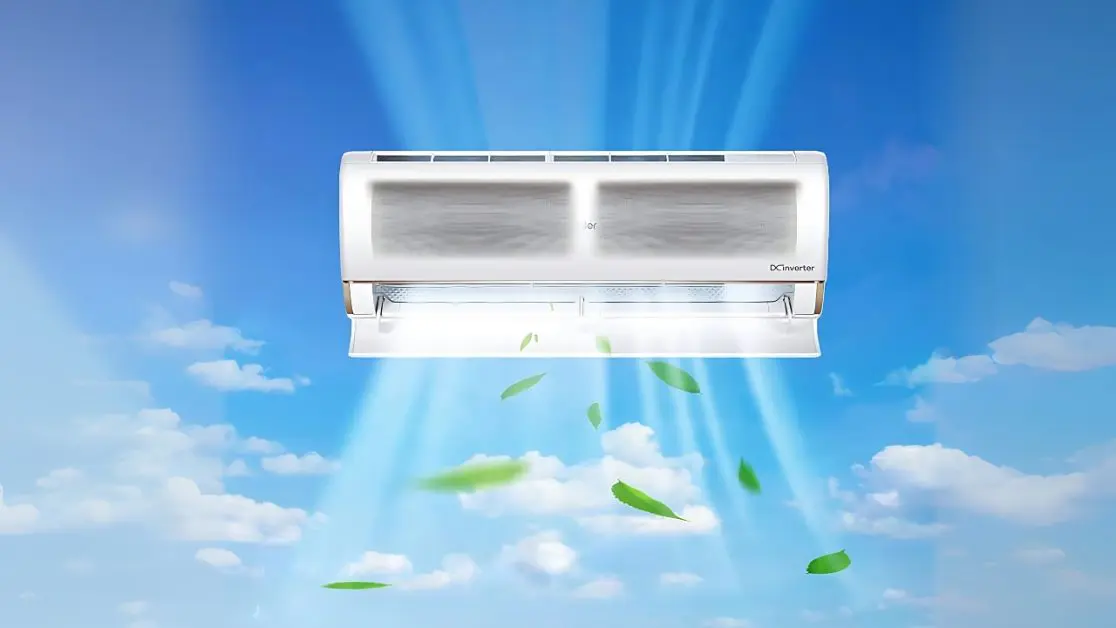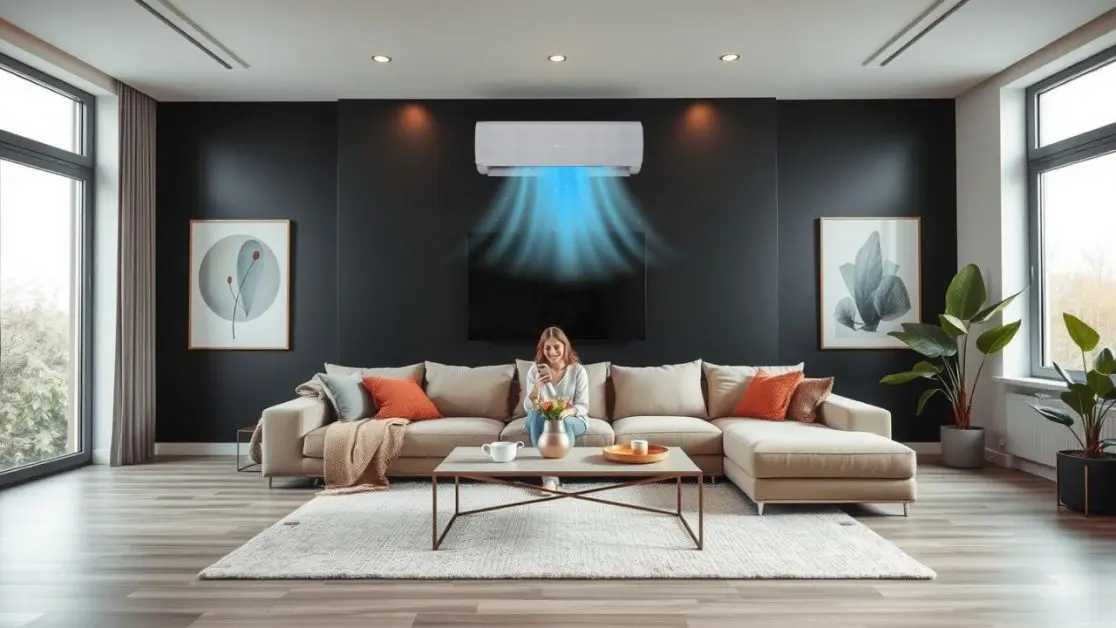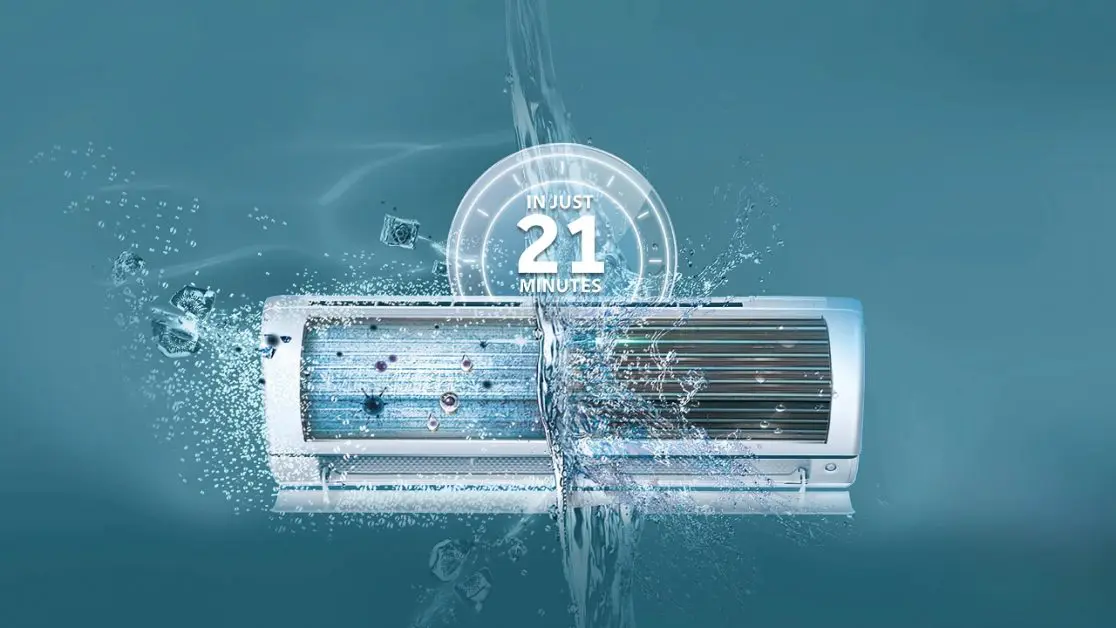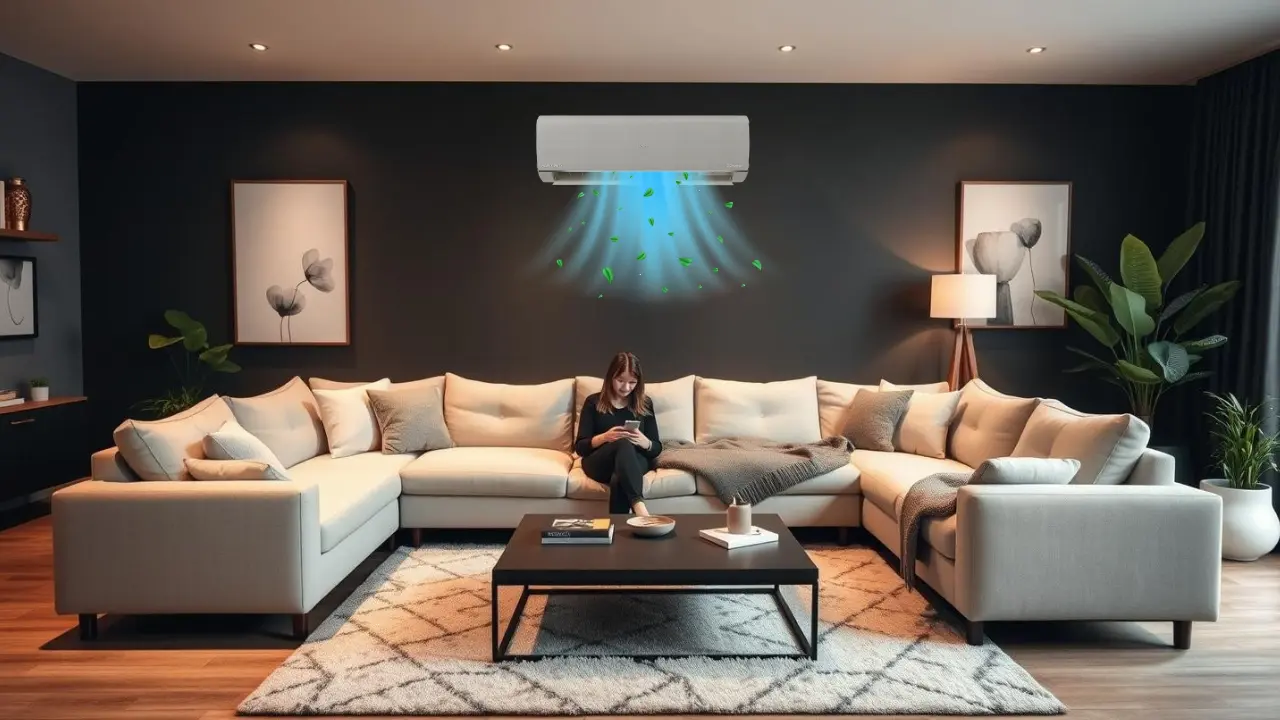Have you ever wondered why sometimes the air inside your home feels heavier even with the AC on? As odd as it may sound, that stuffy, musty sensation is uncomfortable and indicates that the air inside is more polluted than outside.
With rising outdoor air pollution, it is no surprise that the quality of the indoor air has started to become a concern for households in India. People tend to spend more time indoors, working, studying, and relaxing, but during all these activities, they are exposed to a tiny, invisible airborne pollutant.
Luckily, air conditioners have begun serving more functions than merely cooling your space. Modern ACs now also aim to help clean the air, all thanks to technologies such as the PM 2.5 filter.
What is PM 2.5, how does it affect your health, and does an AC with a PM 2.5 filter actually aid in improving the breathability of the air indoors? The short answer is yes, but there is more to the story.
Now let’s discuss how smart air conditioners such as Haier’s Gravity Series keep us cool while gently combating indoor air pollution.
Why Understanding PM 2.5 Is Important

Before discussing how smart air conditioners work, it’s important to know what PM 2.5 is.
PM 2.5 refers to particulate matter measuring 2.5 microns and smaller.
To put this into perspective, a human hair is roughly 30 times wider than PM 2.5 particles.
These particulates are very tiny and can infiltrate the nostrils, thus having the ability to reach deep into the lungs.
PM 2.5 Sources Within the Home Include:
- Cooking smoke and pet dander
- Dust mites and dander from pets
- Toxins from household products such as paints and furniture like volatile organic compounds (VOCs)
- Outdoor air pollution entering through windows and doors
Once airborne, particulates tend to remain suspended and can be inhaled multiple times.
The Role of ACs in Improving Indoor Air Quality
Previous air conditioning systems only regulated temperatures. That has now changed due to improving technology and smart living.
Modern air conditioning units, particularly the smart ones such as the Haier Gravity Series, now include an air purifier as part of their system. “PM 2.5” is one of the filters added for that purpose.
What Is a PM 2.5 Filter and How Does It Work?

A PM 2.5 filter is meant to capture and eliminate some airborne particulate matter, especially those smaller than 2.5 microns in size. These filters are made of non-woven or electrostatically charged fabric with high-efficiency properties as they are able to attract and hold onto tiny particles.
- Capturing fine dust along with allergens missed by other filters
- Improving the respiratory health of individuals by reducing pollutants present in the air
- Less particulates mean a cleaner home environment
- Reduction of odor and smoke emitted indoors such as from cooking
Though PM 2.5 filters are not HEPA filters (which are able to catch even smaller particles), they more than get the job done for general residential use, especially in urban Indian homes.
Why PM 2.5 Filtration Matters in Indian Homes
Urban India struggles with low air quality, and many people do not realize that the indoor air quality can be two to five times worse than the outdoor.
Here’s why PM 2.5 filters are especially useful for India:
- Urban Pollution: Delhi, Mumbai, and Bengaluru are highly populated cities, and they regularly record low AQI (Air Quality Index) values. In addition, PM 2.5 levels increase during winters, festive seasons, and even during peak traffic hours.
- Allergy Season: Pollen and dust allergies are part of life in Indian households. PM 2.5 filters help reduce exposure to these allergens.
- Cooking Indoors: Unlike many other cultures, Indian cooking entails a lot of frying with smoky spices that contribute to fine particulate matter indoors.
Smart ACs: Purifying and Cooling with Intelligence
Air conditioners from Haier’s Gravity Series do not merely cool; they also have the ability to purify and enhance air quality while cooling the home, offering a refreshing change.
Key Features That Aid Indoor Air Quality
PM 2.5 Filter
Built-in filters of PM 2.5 retain minute particles of dirt through the emission of fine liberated pollutants, thus cleaning the air indoors, making it healthier to breathe.
AI Self Clean Technology

This technology helps the air conditioner automatically clean its evaporator coil by freezing and defrosting, making it impossible for mold, dust, and bacteria to settle inside the unit.
Triple Inverter+ Technology
Although designed primarily for energy savings, this feature of the air conditioner provides constant room temperature and circulation of inflow and outflow of air, which prevents stagnation.
Voice and Wi-Fi Control Features
With voice control and the Haier Smart App, the air quality can be fresh long before you step inside, as features like purification and temperature control can be done remotely.
Filters Comparison: Traditional vs PM 2.5
| Feature | Standard Dust Filter | PM 2.5 Filter |
| Particle Capture Size | ~10 microns and larger | 2.5 microns and smaller |
| Removes Allergens | Limited | Yes |
| Reduces Indoor Pollution | Partially | Highly Effective |
| Suitable for Urban Homes | Not Ideal | Strongly Recommended |
| Requires Regular Maintenance | Yes | Yes (clean every few weeks) |
Recommendations for Maintenance: PM 2.5 Filters

In sharp focus, the PM 2.5 filter of your AC box needs the following tasks to maintain its best performance:
- During peak seasons, clean every 2–4 weeks.
- Dry vacuum or rinse (as per AC manufacturer’s instructions).
- Once a year, or during visible impairment, replace the filter.
By neglecting these tasks, the effectiveness of your AC flow unit will be compromised.
Does Having PM 2.5 Filters in ACs Eliminate the Need for Air Purifiers?
The simple answer is no, but it is pretty close.
If a user’s primary concern is indoor urban air pollution, an air conditioner unit with PM 2.5 filtration can definitely bring down the indoor pollution levels to a reasonable range. For households with elderly individuals or asthma patients living in highly polluted areas, using a dedicated air purifier alongside a PM 2.5 AC is a good approach.
However, for the bulk of contemporary residential units, particularly the flats in Indian metro cities, smart ACs with PM 2.5 filtration offer an optimal combination of cooling and air quality improvement.
The Overall System: Cleanliness and Comfort

In addition to the scientific angle, the advantages of cleaner indoor air are experienced daily:
- Improved breathing for children, elderly, and allergy sufferers
- Reduced dust accumulation on surfaces and electronics
- Enhanced sleep due to fresh, odorless air
- Increased mental clarity and physical energy due to cleaner indoor oxygen
Smart, dual-purpose appliances like these are not only a luxurious gadget, but rather a means of improving health and well-being, especially as Indian summers become hotter and urban pollution increases.
Overall Impression
Not every air conditioner is the same. While cooling remains the most crucial function, modern smart ACs with PM 2.5 filters are improving indoor air well-being. They capture minute particles, help with healthy respiration, and provide reassurance for families living in heavily populated cities.
For air conditioner shopping, looking at the other features aside from star ratings and tonnage may be worth considering. Features such as PM 2.5 filters, AI self-cleaning, and smart connectivity increase the overall value, especially for a country like India where the quality of air is a constant problem.
Would You Like to Enjoy Breathing Cleaner, Cooler Air?
Discover the newest collection of intelligent, health-centric air conditioners by Haier India that are tailored to keep your home clean, your energy expenses low, and ensure high convenience.
For more, visit Haier India Home Appliances and see the ways smart ACs are changing life indoors, one breath at a time.

